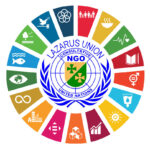GOAL 2: Zero Hunger

Malnutrition affects nearly 800 million people worldwide, most of whom are women and children. The 2030 Agenda has set a goal to end hunger and all forms of malnutrition in the world in the next 15 years. Goal 2 includes a sub-goal on ending all forms of malnutrition in addition to ending hunger. The quality of food is as important as the quantity. The goal also integrates economic aspects, including doubling agricultural productivity and the in-comes of smallholder farmers by 2030. To ensure that increasing food pro-duction does not come at the expense of the environment, Goal 2 also includes targets to ensure sustainable agriculture.
What is to be achieved?
- End hunger by 2030 and ensure that all people, especially the poor and those in vulnerable situations, including young children, have year-round access to safe, nutritious, and sufficient food.
- End all forms of malnutrition by 2030, including by achieving the inter-nationally agreed targets on growth restriction and emaciation among children under 5 by 2025, and address the nutritional needs of adolescent girls, pregnant and lactating women, and older people.
- By 2030, double agricultural productivity and incomes of small-scale food producers, especially women, indigenous peoples, family farmers, pastoralists, and fishers, including through secure and equitable access to land, other productive resources and inputs, knowledge, financial services, markets, and opportunities for value addition and off-farm employment.
- By 2030, ensure the sustainability of food production systems and adopt resilient agricultural practices that increase productivity and yield, contribute to ecosystem conservation, increase adaptive capacity to climate change, extreme weather events, droughts, floods, and other disasters, and progressively improve land and soil quality.
- By 2020, conserve the genetic diversity of seeds, crops and livestock and their wild relatives, including through well-managed and diversified seed and plant banks at national, regional, and international levels, and promote access to, and the fair and equitable sharing of, the benefits arising from the utilisation of genetic resources and associated traditional knowledge, as agreed at international level.
How is the goal to be achieved?
- Increase investment in rural infrastructure, agricultural research and extension services, technology development, and crop and livestock gene banks, including through enhanced international cooperation, to improve agricultural production capacity in developing countries, particularly least developed countries.
- Establish sound policy frameworks at national, regional, and international levels based on pro-poor and gender-sensitive development strategies to support accelerated investment in poverty eradication measures Correct and prevent trade restrictions and distortions in global agricultural markets, including through the parallel elimination of all forms of agricultural export subsidies and all export measures with equivalent effect, in line with the mandate of the Doha Development Round.
- Take measures to ensure the smooth functioning of markets for food commodities and their derivatives and facilitate rapid access to market information, including on food reserves, to help limit extreme food price volatility.




